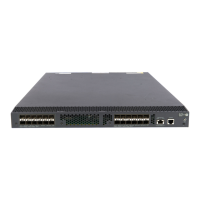14
• The term "interface" in this chapter collectively refers to Layer 3 interfaces, including VLAN
interfaces and Layer 3 Ethernet interfaces. You can set an Ethernet port as a Layer 3 interface by
using the port link-mode route command (see Layer 2—LAN Switching Configuration Guide).
Configuration task list
Tasks at a
lance
(Required.) Enabling the NTP service
(Required.) Perform at least one of the following tasks:
• Configuring NTP association modes
• Configuring the local clock as a reference source
(Optional.) Configuring access control rights
(Optional.) Configuring NTP authentication
(Optional.) Configuring NTP optional parameters
Enabling the NTP service
Ste
Command
Remarks
1. Enter system view.
system-view N/A
2. Enable the NTP service.
ntp-service enable
By default, the NTP service is not
enabled.
Configuring NTP association modes
This section describes how to configure NTP association modes.
Configuring NTP in client/server mode
When the device operates in client/server mode, specify the IP address for the server on the client.
Follow these guidelines when you configure an NTP client:
• A server must be synchronized by other devices or use its local clock as a reference source before
synchronizing an NTP client. Otherwise, the client will not be synchronized to the NTP server.
• If the stratum level of a server is higher than or equal to a client, the client will not synchronize to that
server.
• You can configure multiple servers by repeating the ntp-service unicast-server and ntp-service ipv6
unicast-server commands.
To configure an NTP client:

